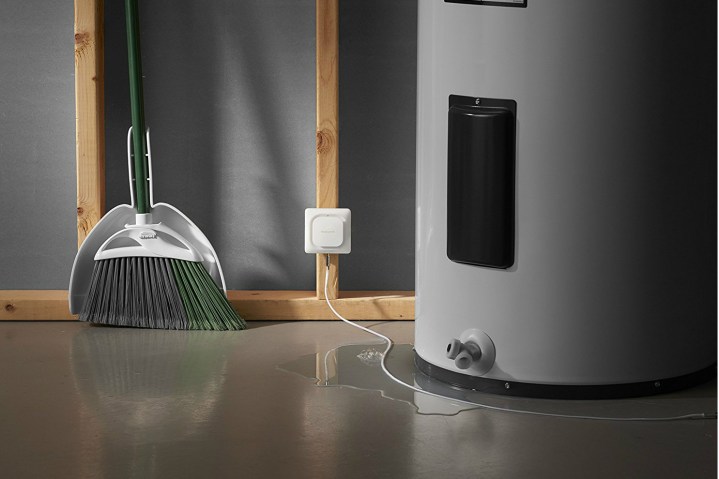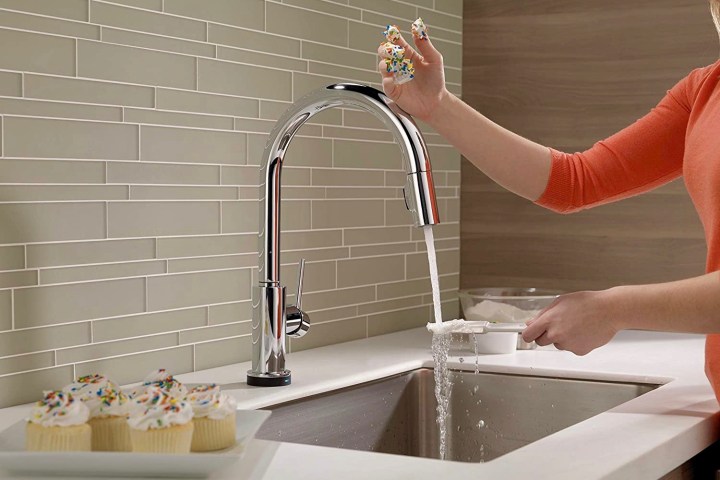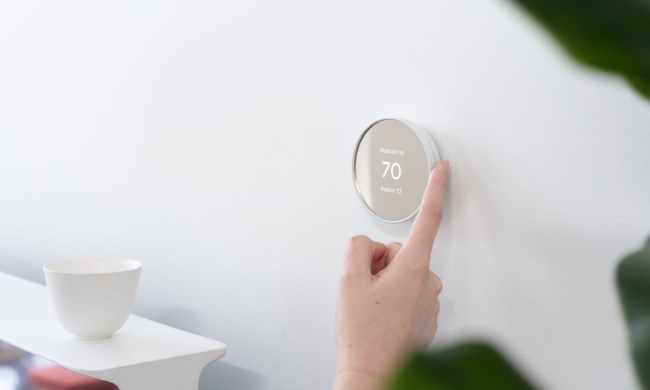The world of smart home plumbing is still relatively small, but the benefits of hooking up your home’s pipes with sensors can save you loads on repairs by catching leaks early. Managing your water usage can be vital if you’re living in a drought-prone area, while smart water heating can save a few bucks on your monthly bills, too. Let’s take a look at some of the smart home water management system types available, and what they can do for you.
Smart leak sensors

Water leaks account for 10,000 gallons of lost water each year per home. About 10% of homes leak more than 90 gallons a day, adding up to a whopping one trillion gallons of leaked water nationwide each year. It’s a big problem, but highly fixable. For starters, it’s easy to get into smart leak sensors and use them in your home. There are a couple of ways these can work.
The most affordable sensors detect moisture on the ground. For some examples, check out our favorite smart leak detectors. These units are simple to set up, but really only send your phone a notification once things have gotten bad. The more advanced leak sensors will monitor water pressure at the source and determine leaks based on changes to that water pressure. This can provide an earlier warning of drips no matter where they’re happening. These systems often have a remote shutoff so you can use your phone to cut off a home’s water whenever it detects a leak. Not long ago, we took a close look at Moen’s Flo system which does exactly this kind of thing, and we walked away impressed. Phyn, made in coordination with Belkin, has a similar water leak system worth checking out.
Smart water heaters

Smart water heaters plug into your home’s plumbing as well as your home’s electrical system. It keeps tabs on how expensive power is at any given time, when you generally use your hot water, and then plans the heating accordingly. Smart thermostats operate on a similar basis, only for your home’s climate control. We’ve already looked at smart water heaters that can pre-emptively heat your tank when electrical rates are low.
Smart faucets

If you’re going to be connecting your home’s plumbing to your phone, it makes sense to do so at the final output. Smart faucets boast a range of user-friendly functions, such as touchless control, flow rate adjustment, and disbursement monitoring. This means you can, for example, use Alexa to ask your faucet to pour out an exact measurement of water. If you’re interested in something like this for your kitchen or washroom, check out some of our favorite smart faucets or read our review of U by Moen to see what they’re like in action.
Can you save energy with smart water management?
Your biggest potential savings in Wi-Fi-connected plumbing is with your water heater. Hot water eats up about 20% of a household’s energy demands. A Uniform Energy Factor rating is used to determine exactly how efficient a water heater is at using power. That rating along with additional testing is used to provide the tank with an Energy Star certification for efficiency. This designation is typically given to products proven to save a minimum of 10% on energy bills compared to standard products. Energy Star criteria for water heaters vary depending on tank size and whether they’re electric or gas-fired. Though the EPA is still testing smart water heaters for their benefits, their ability to help you control energy usage will do the most work with inefficient water heaters that have a lot of room to make up. If you have a water heater that isn’t Energy Star certified, consider adding a smart water management upgrade to make up the difference.
As water supply grows more scarce in some areas, you may see your utilities offering incentives to install these flow management systems. Be sure to look at this useful state-by-state breakdown of rebates available for water efficiency measures to see what’s available in your area.



